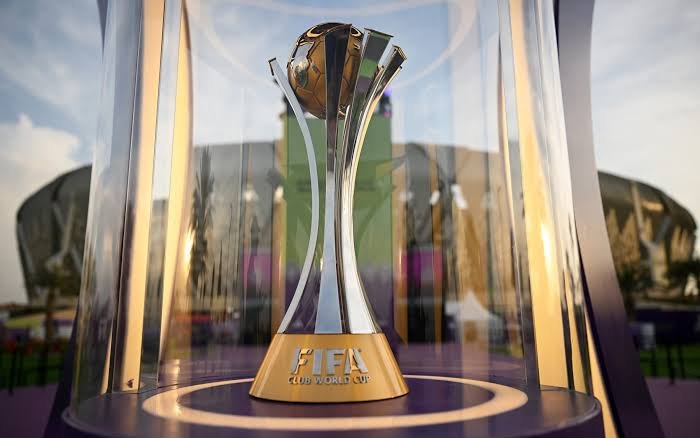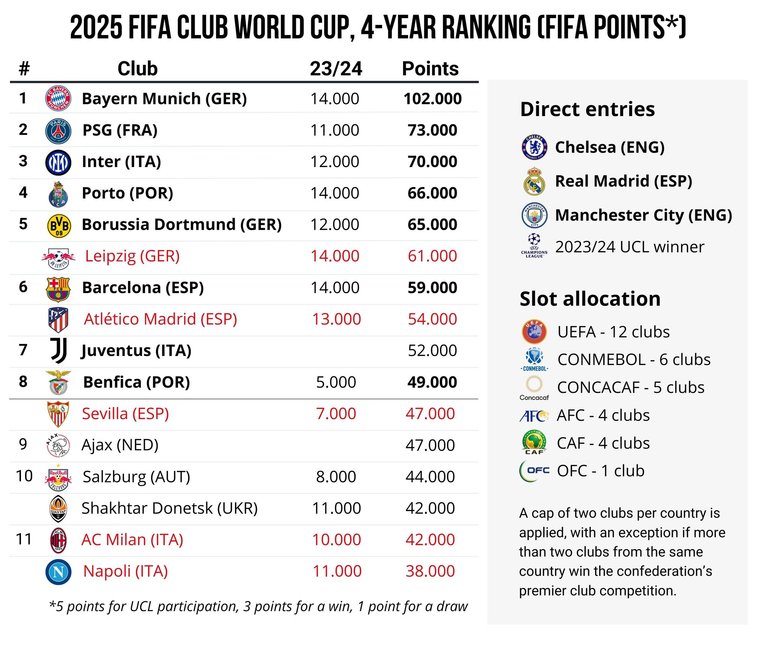
Cuando parece que a la FIFA se le agotan las ideas, surge alguna nueva que aumenta la carga de competencias y exigencia deportiva para los jugadores de fútbol.
Ya hemos visto en el último mundial disputado en Qatar que varios seleccionados debieron sufrir la ausencia de importantes protagonistas debido a lesiones provocadas por la enorme carga de partidos que los principales equipos del mundo, que cuentan en sus filas con los mejores y más cotizados jugadores, deben completar en cada una de las ligas locales primero, las diversas competencias internacionales de clubes, las eliminatorias de las selecciones para el mundial y si todo ello no alcanzara, los partidos amistosos y de exhibición que por contrato deben incluir lo mejor de la plantilla de cada equipo.
Una copa que comenzó a disputarse en el año 1960 y que se jugaba anualmente entre el club campeón de la copa de Europa y el campeón de la copa Libertadores de América, daba al ganador el título de campeón intercontinental, sin embargo, los ganadores se auto adjudicaban el derecho a identificarse como campeón mundial de clubes, quizás un tanto exagerado porque en realidad consagraba a un equipo de un continente o a un equipo de medio continente.
No escapa al entendimiento general que ambas regiones se han impuesto hasta el presente en todos los campeonatos mundiales de selecciones que se llevan disputado y con ello se hace innegable suponer que en tales lugares se encuentran los mejores clubes y jugadores de todo el mundo, no obstante, ese título no contaba con el beneplácito de los clubes de los demás continentes que ni siquiera tenían la posibilidad de competir.

Ese formato comenzó a acabarse en el año 2000, con el arribo del nuevo siglo, como si se tratara de una redención reclamada y esperada en la organización del fútbol moderno.
Con el cambio de siglo la FIFA tomó las riendas del caso y comenzó a organizar lo que dio en llamarse mundial de clubes. Por supuesto el objetivo deportivo fue el de ampliar la cantidad de participantes y hacerlo más justo e inclusivo a todos los continentes, el objetivo económico como siempre, el de recaudar más.

En un principio el formato acordado aseguraba la participación de siete equipos de diferentes confederaciones y se jugaba anualmente, pero a partir de la próxima edición que se llevará a cabo en el año 2025 en los Estados Unidos de América, la cantidad de equipos ha sido elevada a 32 y la periodicidad ampliada a un evento cada 4 años, similar a lo que acontece con el mundial de selecciones.
Hasta el momento ya hay 30 equipos confirmados y solo quedan 2 lugares disponibles, uno reservado al campeón de la copa Libertadores de América y el otro a un club del país organizador ¿será el Inter Miami de Messi?
La lista se completa con 12 equipos de Europa, 6 de Sudamérica, 4 de Centro y Norteamérica, 4 de África, 4 de Asia, 1 de Oceanía y uno del país organizador.
Por Sudamérica ya están clasificados Palmeiras, Flamengo y Fluminense por Brasil, River y Boca por Argentina y resta el próximo campeón de América que de ser alguno de los ya clasificados, la clasificación recaerá sobre Olimpia de Paraguay por ser el siguiente en el ranking de la Conmebol.
Una competencia más en las alforjas ya saturadas de los atletas, una recaudación más para las insaciables arcas de las confederaciones y la FIFA.
Soccer Club World Cup
When it seems that FIFA is running out of ideas, a new one comes along that increases the burden of competitions and sporting demands for football players.
We have already seen in the last World Cup in Qatar that several national teams had to suffer the absence of important protagonists due to injuries caused by the enormous load of matches that the main teams in the world, which have the best and most sought-after players in their ranks, must complete in each of the local leagues first, the various international club competitions, the qualifying rounds for the World Cup and if all this is not enough, the friendly and exhibition matches that by contract must include the best of each team's squad.
A cup that began to be played in 1960 and was played annually between the club that won the European Cup and the winner of the Copa Libertadores de América, gave the winner the title of intercontinental champion, however, the winners claimed the right to identify themselves as world club champions, perhaps a bit exaggerated because in reality it consecrated a team from one continent or a team from half a continent.
It is not lost on the general understanding that both regions have prevailed to date in all the world championships of national teams that have been played and with this it is undeniable to assume that in such places the best clubs and players from all over the world are found, however, this title did not have the approval of the clubs from the other continents that did not even have the possibility of competing.
This format began to end in the year 2000, with the arrival of the new century, as if it were a demanded and expected redemption in the organization of modern football.
With the turn of the century, FIFA took the reins of the case and began to organize what was called the Club World Cup. Of course, the sporting objective was to increase the number of participants and make it fairer and more inclusive to all continents, the economic purpose, as always, was to raise more.
Initially, the agreed format ensured the participation of seven teams from different confederations and it was played annually, but starting with the next edition that will take place in 2025 in the United States of America, the number of teams has been raised to 32 and the frequency has been extended to an event every 4 years, similar to what happens with the World Cup for national teams.
So far, there are 30 confirmed teams and only 2 places left available, one reserved for the Copa Libertadores de América champion and the other for a club from the host country. Will it be Messi's Inter Miami?
The list is completed with 12 teams from Europe, 6 from South America, 4 from Central and North America, 4 from Africa, 4 from Asia, 1 from Oceania, and 1 from the host country.
Palmeiras, Flamengo, and Fluminense from Brazil, and River and Boca from Argentina have already qualified for South America, and the next champion of America remains to be chosen. If it is one of those already qualified, the qualification will fall to Olimpia from Paraguay as they are next in the Conmebol ranking.
One more competition in the already saturated coffers of the athletes, one more collection for the greedy coffers of the Confederations and FIFA.
Héctor Gugliermo
@hosgug


